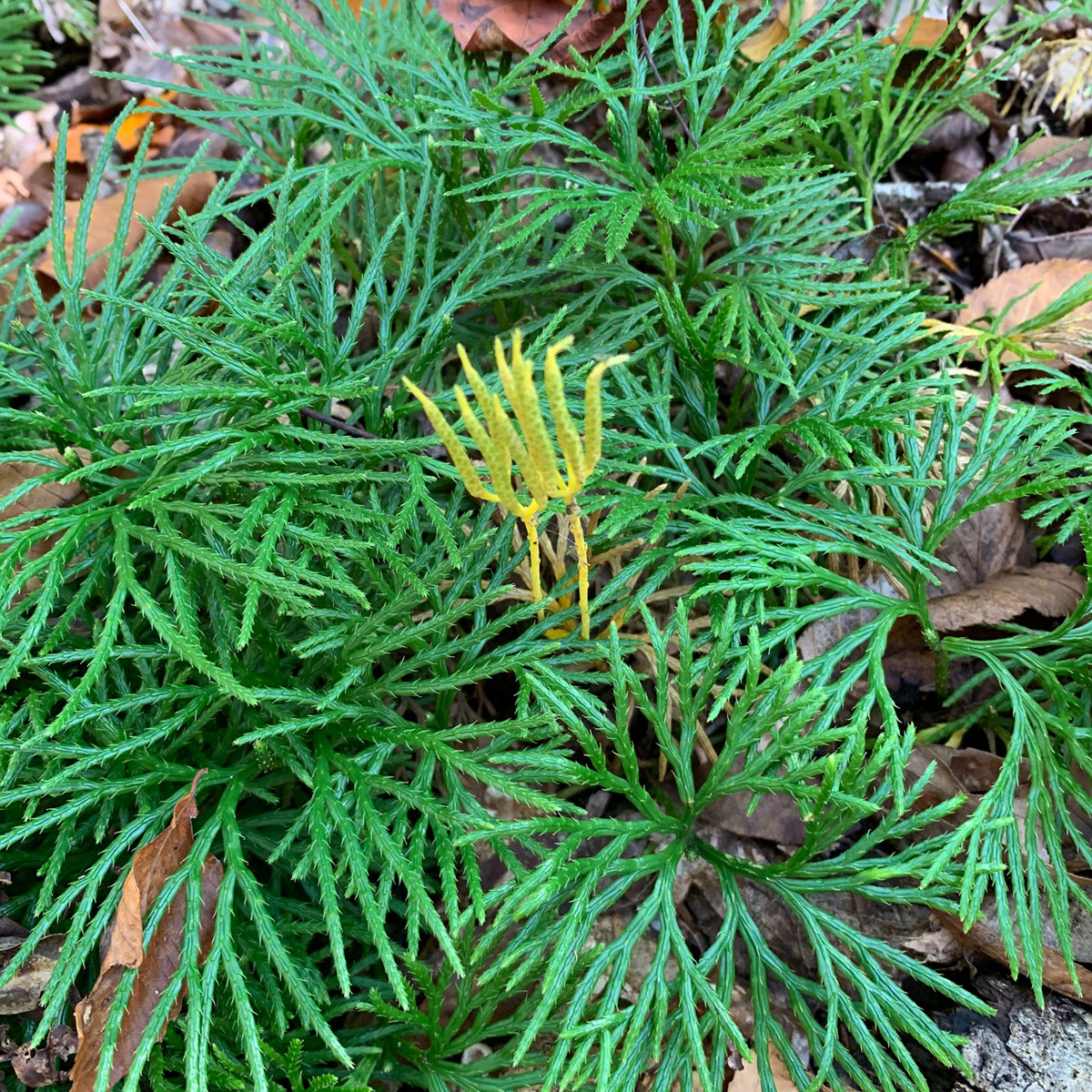This is one of my favorite plants! When I first saw it on a rock in the stream, I was enticed. It looked so weird! Well, it’s not only possibly one of the first land plants on Earth EVER, but it also looks kind of funky and seems to have scales like an alligator!
There are approximately 6,000 species of liverwort, and I do not know which this is, and I don’t care! It’s just so cool! Wait – I just figured it out … I think this must be
Snakeskin liverwort, because as I said, it looks like it has scales… also known as Great Scented Liverwort because when the thallous is crushed, it smells, well, “refreshing”. The “scales” are actually the outlines of its internal air chambers and the bump or dot in the middle of each chamber is an air pore. But we’re not even getting started with the cool weirdness here.
There is so much fascinating information about this plant that I might have to just re-type a lot from Wildflowers & Plant Communities. So here goes… are you ready? Get ready ….
“Liverworts evolved from green algae about 400 million years ago. To put this into perspective, the oldest known flowering plants are about 130 million years old. Liverworts are considered to be the simplest land plants because they lack stomates for controlling gas exchanges and specialized cells (in the form of vascular tissue) for conducting water and nutrients. Instead of roots, they have numerous single-celled appendages called rhizoids that anchor the plant to its substrate. Like mosses and ferns, liverworts reproduce sexually through spores…Liverworts also spread when pieces of the parent plant break off and grow, a process known as fragmentation.”
Alternate Names: Snakewort, Cat-tongue Liverwort, Mushroom-headed Liverwort, Great Scented Liverwort Size: Forms a flattened thallous that is about 1/2-3/4" across and 2-6" long Family: Conocephalaceae (Thallous Liverwort Family) Habitat: "Prefers dappled sunlight to medium shade, consistently moist or wet conditions (including occasional submergence in water), some protection from wind, and either rocky ground or rock surfaces with a thin layer of soil containing organic matter. It is able to tolerate dense shade to a greater extent than most plants." Identification: "The thallus branches occasionally, forming 2 or more lobes. Over time, older lobes of the thallus wither away, while younger lobes continue to grow. Eventually, the younger lobes become separated from each other, resulting in 2 or more clonal plants (thalli). The margins of the thallus lobes are somewhat undulate (horizontally and to a lesser extent vertically). The upper surface of the thallus can be yellowish green (while in sunlight), green (while in shade), or purplish green (during the winter); it is hairless and dull to shiny. Each thallus lobe tends to be a darker shade of green along the middle; thallus lobes also darken with age. The upper surface of the thallus is more or less flat, although it can have shallow depressions and shallow elevations. The upper walls of relatively large air chambers are visible on the upper surface of the thallus; they are polygonal in shape and separated from each other by conspicuous indentations. These indentations are darker than the surrounding surface. In the center of the upper wall of each air chamber there is a whitish air pore that is usually visible to the naked eye." From IllinoisWildflowers.info











